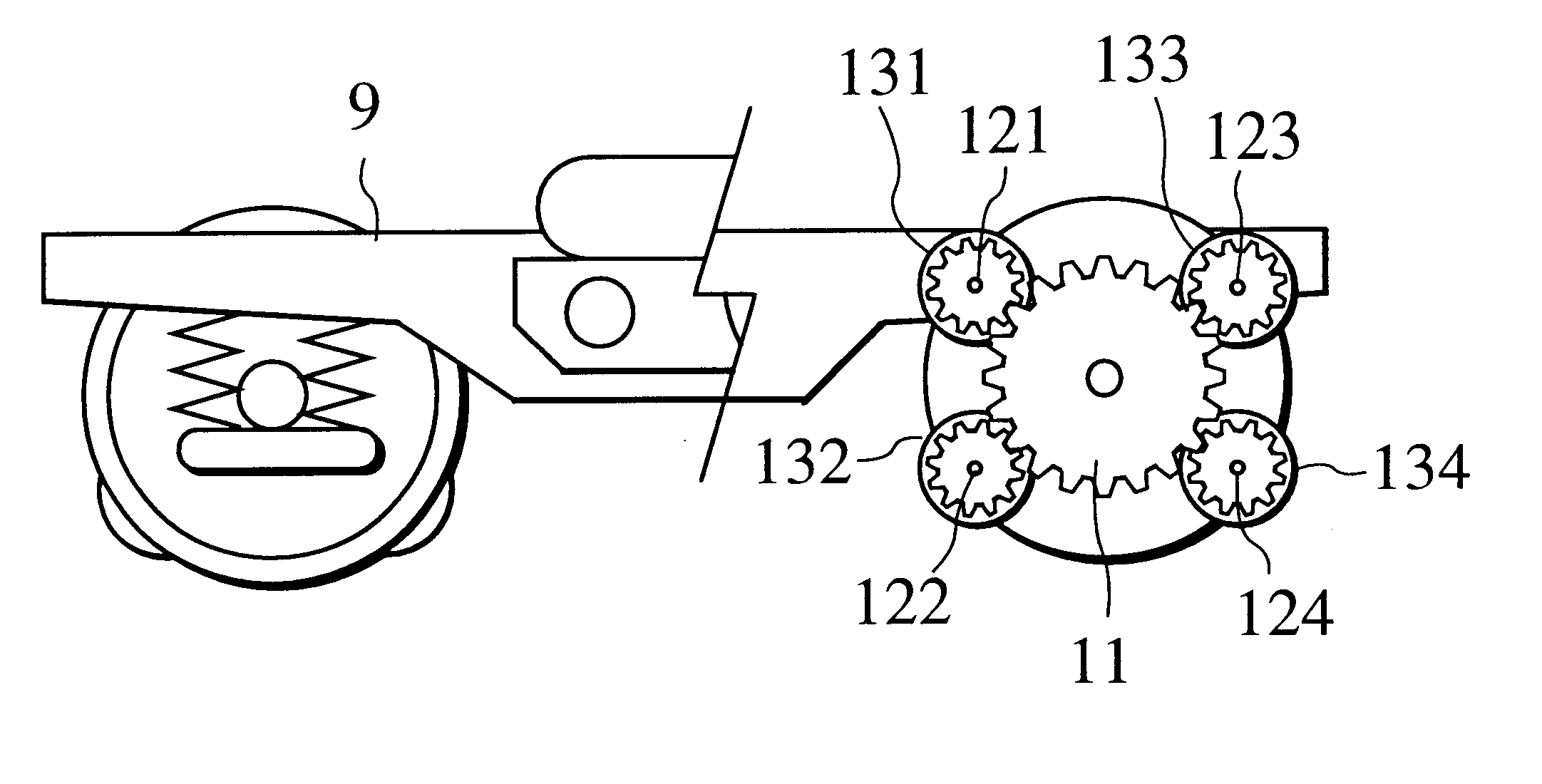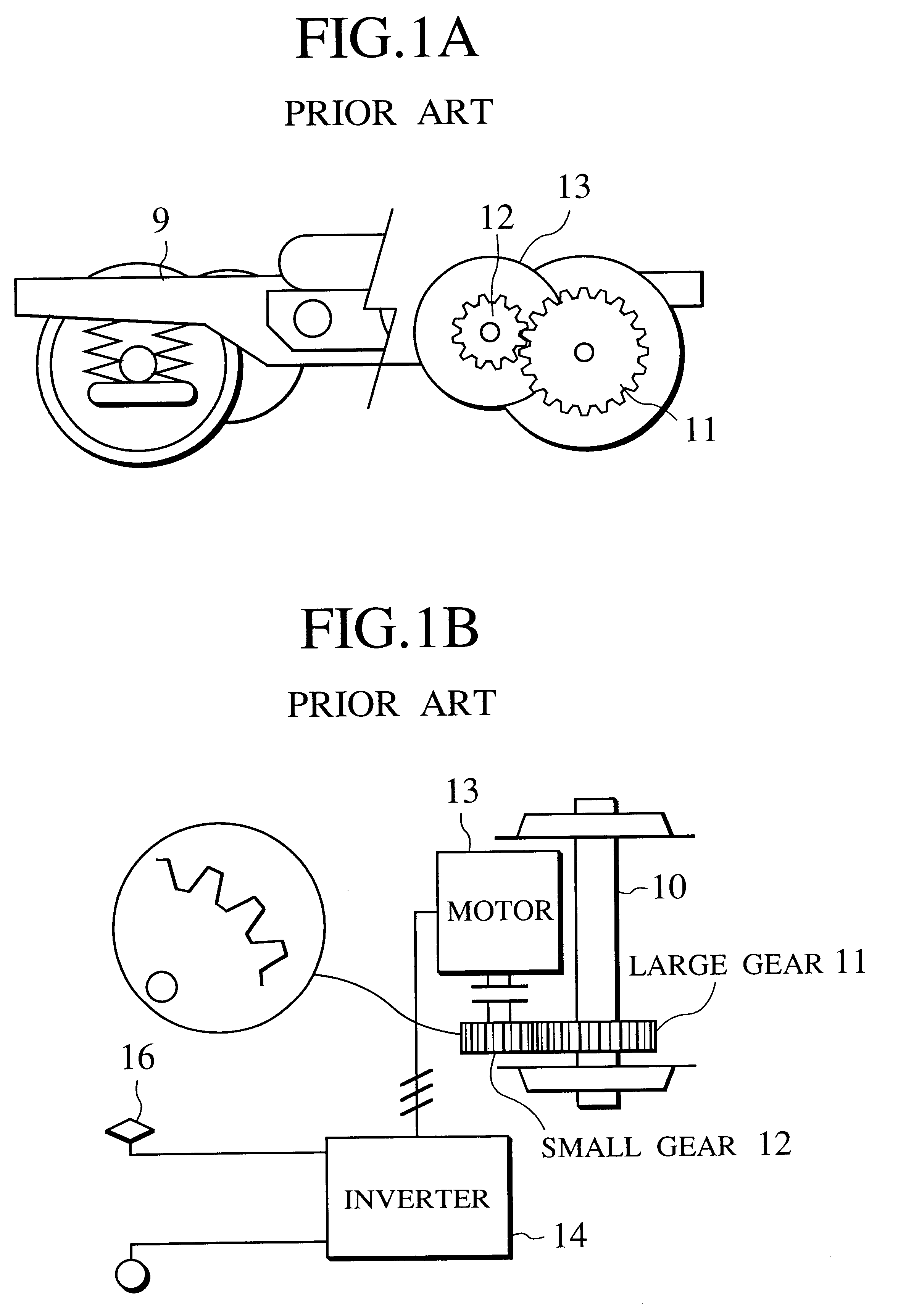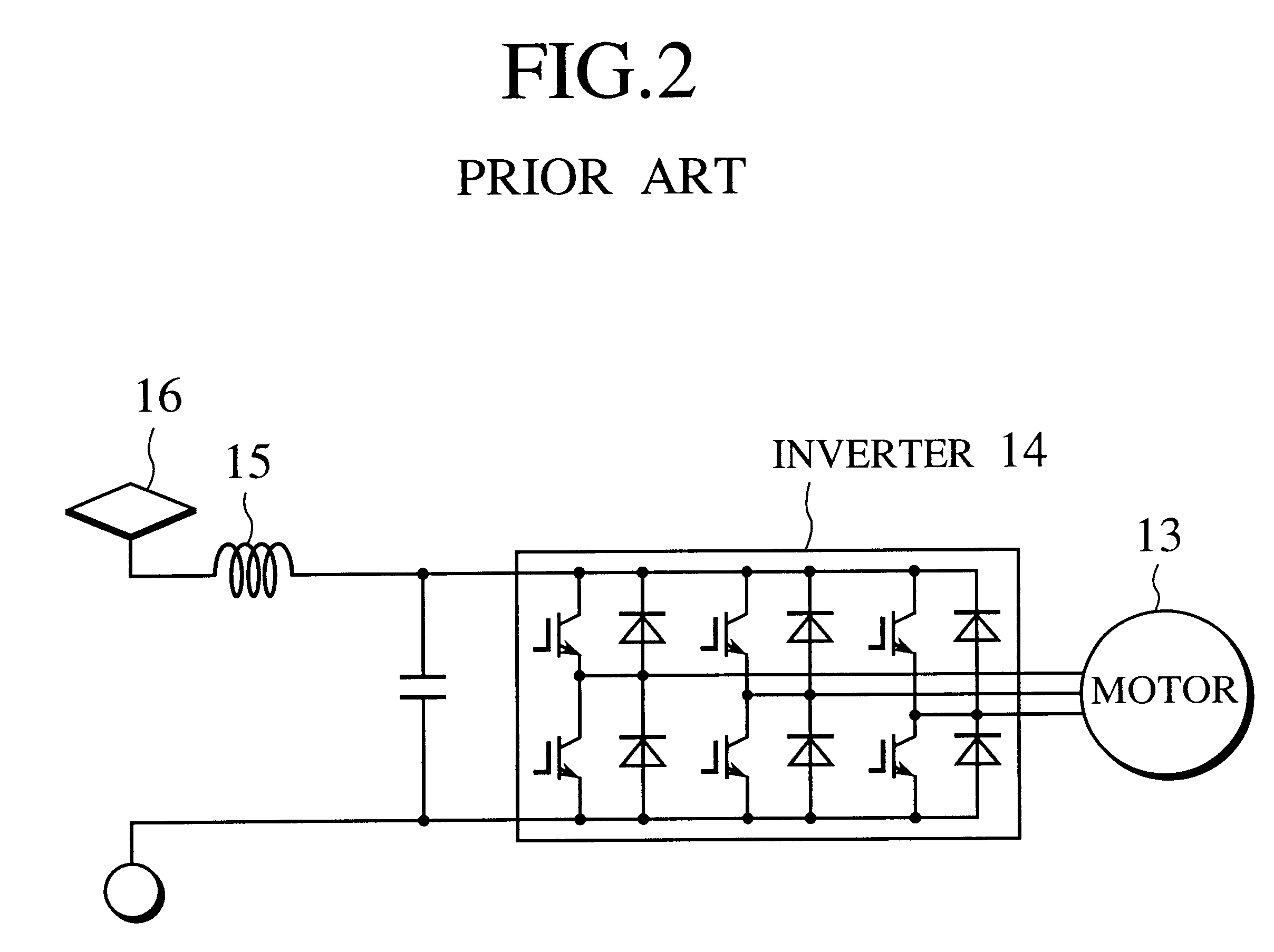Apparatus for driving electric car by inverter-controlled motor through gear mechanism
a technology of inverter-controlled motors and electric cars, which is applied in the direction of dc-ac conversion without reversal, electric devices, propulsion by batteries/cells, etc., can solve the problem of limit on the torque amplification factor of gears and motor speed, serious harmonic induction problem, and the inability to reduce the size, weight and cost of the apparatus
- Summary
- Abstract
- Description
- Claims
- Application Information
AI Technical Summary
Benefits of technology
Problems solved by technology
Method used
Image
Examples
first embodiment
Various embodiments of the present invention will be described with reference to the accompanying drawings. FIGS. 3A, 3B, and 4 show an apparatus for driving and controlling a car according to the present invention. The apparatus includes a large gear 11, four small gears 121 to 124, four AC motors 131 to 134, four inverters 141 to 144, a filter reactor 15, a feeder system 16, and four flexible joints 171 to 174.
The large gear 11 is coaxial to and directly connected to a wheel shaft 10 and is mechanically arranged to mesh with the small gears 121 to 124. Torque generated by the AC motors 131 to 134 is amplified at a gear ratio defined by the small gears 121 to 124 and large gear 11, to rotate the wheel shaft 10 and drive the car.
Compared with the prior art that transmits torque to a wheel shaft and wheels with a small gear and a large gear, the first embodiment transmits the same torque to the wheel shaft by dividing the torque with the four small gears 121 to 124 to thereby reduce ...
third embodiment
A feeder system 16 supplies a DC source voltage of about 1500 V. When the inverters 141 to 144 are made of standard inverters, they may each have a DC withstand voltage of about 500 V. If one of the inverters, for example, the inverter 141 fails, the switch 311 connected in parallel with the inverter 141 is short-circuited so that the remaining inverters evenly divide and bear the DC source voltage of 1500 V to continue their operations. In this case, torque may be reduced to 3 / 4 of full torque. According to the prior art, however, a failure of one inverter causes a total halt of a corresponding motor, although the car is continuously driven by motors of other wheel shafts. Unlike the prior art, the third embodiment minimizes a torque drop when an inverter failure occurs.
In addition to the effect of the first embodiment, the third embodiment provides an effect of minimizing a torque drop and continuously running the car even if some of the inverters 141 to 144 fail.
FIGS. 8 and 9 sho...
fourth embodiment
In this way, if some of the inverters 141 to 144 fail and if a DC input overvoltage is applied to the remaining sound inverters that are continuously operating, the fourth embodiment opens the disconnection switch 32 to prevent the sound inverters from being broken.
FIG. 10 shows an apparatus for driving and controlling a car according to the fifth embodiment of the present invention. The fifth embodiment is characterized by an inverter controller 41 that collectively controls a plurality of (four in this embodiment) inverters 141 to 144. The other parts of the fifth embodiment are the same as those of the first embodiment of FIGS. 3 and 4 and are represented with like reference numerals.
The inverter controller 41 receives a U-phase current sum Iu for the four inverters 141 to 144, a W-phase current sum Iw for the four inverters, a feedback value .theta.r from a motor rotational position sensor 42 attached to one of four motors, and a torque command value TrqRef for the four motors a...
PUM
 Login to View More
Login to View More Abstract
Description
Claims
Application Information
 Login to View More
Login to View More - R&D
- Intellectual Property
- Life Sciences
- Materials
- Tech Scout
- Unparalleled Data Quality
- Higher Quality Content
- 60% Fewer Hallucinations
Browse by: Latest US Patents, China's latest patents, Technical Efficacy Thesaurus, Application Domain, Technology Topic, Popular Technical Reports.
© 2025 PatSnap. All rights reserved.Legal|Privacy policy|Modern Slavery Act Transparency Statement|Sitemap|About US| Contact US: help@patsnap.com



